
 |
CHINESE |  |
ENGLISH |  |
FRENCH |  |
GERMAN |  |
ITALIAN |  |
JAPANESE |  |
RUSSIAN |  |
SPANISH |  |
| mail this page to a colleague | |||||||||||||||||

|
|||||||||||||||||
|
| HOME | PRODUCT CARE | SEARCH | SHOPPING CART | NEWS | ABOUT US | DISTRIBUTORS | CONTACT US |
With the recent introduction of the Iridia laser ablation system, Teledyne Photon Machines has made available the Long Pulse (LP) module for the Cobalt ablation chamber. Designed to be highly flexible by allowing users to operate the system across a wide range of gas flows, the LP module is a one-stop shop for users interested in high-speed, high-resolution elemental imaging, but also bulk analysis and isotope ratio work. The LP module takes minutes to install and takes advantage of the proven technology existing on the well-established HelEx cell.
Because of the redesigned geometry of the ablation cell inner cup, the LP module achieves excellent aerosol collection as well as significantly improved transport efficiencies for spot sizes <1 µm in diameter, to spots >100 µm. In its default configuration, the LP module uses the Aerosol Rapid Introduction System (ARIS), which allows the user to achieve single-digit millisecond single pulse response (SPR), as shown in Figure 1. The SPRs are measured by the width of the peak at 10% of the maximum height of the signal (FW0.1M). This configuration is excellent for high-speed, high-resolution elemental imaging.

For applications when slower SPRs are needed (e.g., for multi-elemental imaging, bulk analysis or isotope ratio work), the user can choose from two interfaces for connecting the LP module to the ICP-MS instrument. These interfaces, called the Medium Pulse (MP) Interface (Glass Expansion part number: 31-808-4034) and the LP Interface (Glass Expansion part number: 20-809-4550), are designed to enable a wide range of signal stability performance, from <100 milliseconds to >1 second. Both interfaces are extremely simple to connect and gas flows can be optimized in minutes.
The MP Interface, shown in Figure 2, is a low-volume mixing chamber with a tangential make-up gas input. A zero dead volume fitting connects a 1/16 inch outer diameter PEEK capillary transfer tube and a S13 (13 mm) cup outlet directly connects to the ICP-MS torch without the need for complex and difficult-to-use direct injection torches.
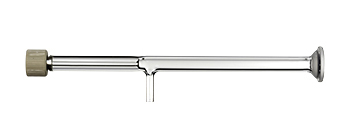
The MP Interface is ideal for multi-elemental imaging applications using a quadrupole ICP-MS instrument. With a tunable SPR of 90–150 ms (Figures 3 and 4), depending on the ICP-MS torch design, this interface makes it easy to monitor multiple elements during an imaging experiment, yet still benefit from the Cobalt cell speed and performance.
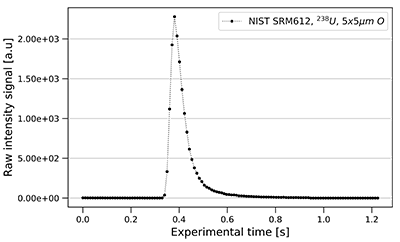
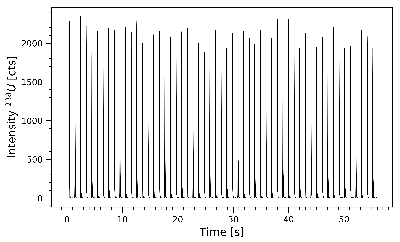
The LP Interface, (Figure 5) is based on Glass Expansion's low-volume cyclonic spray chamber, the Cinnabar™. This modified Cinnabar provides a direct connection to the ICP-MS torch via a S13 (13 mm) cup and direct connection to the Teledyne CETAC ARIS at the inlet via the 13 mm ball joint.
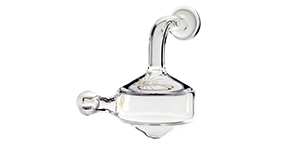
The LP Interface was designed to achieve signal stability even when the application requires the laser to fire at low repetition rates (Figures 6, 7 and 8). Bulk analysis and sensitive isotope ratio work can be carried out at low repetition rate using this interface. Even at repetition rates lower than 10 Hz, there is no need for additional smoothing devices (Figure 8).
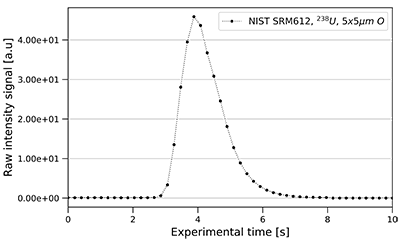
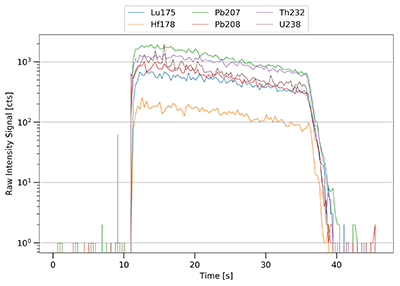
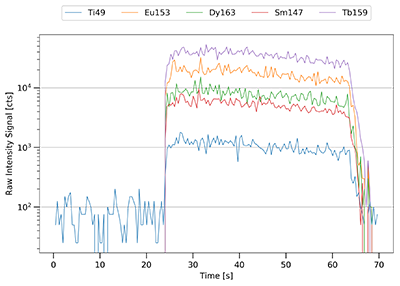
The Iridia laser ablation system simplifies what is normally a complicated and technically challenging process - generating high-quality elemental image maps as quickly and easily as possible.
For more information or questions about the Iridia, please contact Ciprian Stremtan at Ciprian.Stremtan@Teledyne.com or Damon Green at Damon.Green@Teledyne.com.